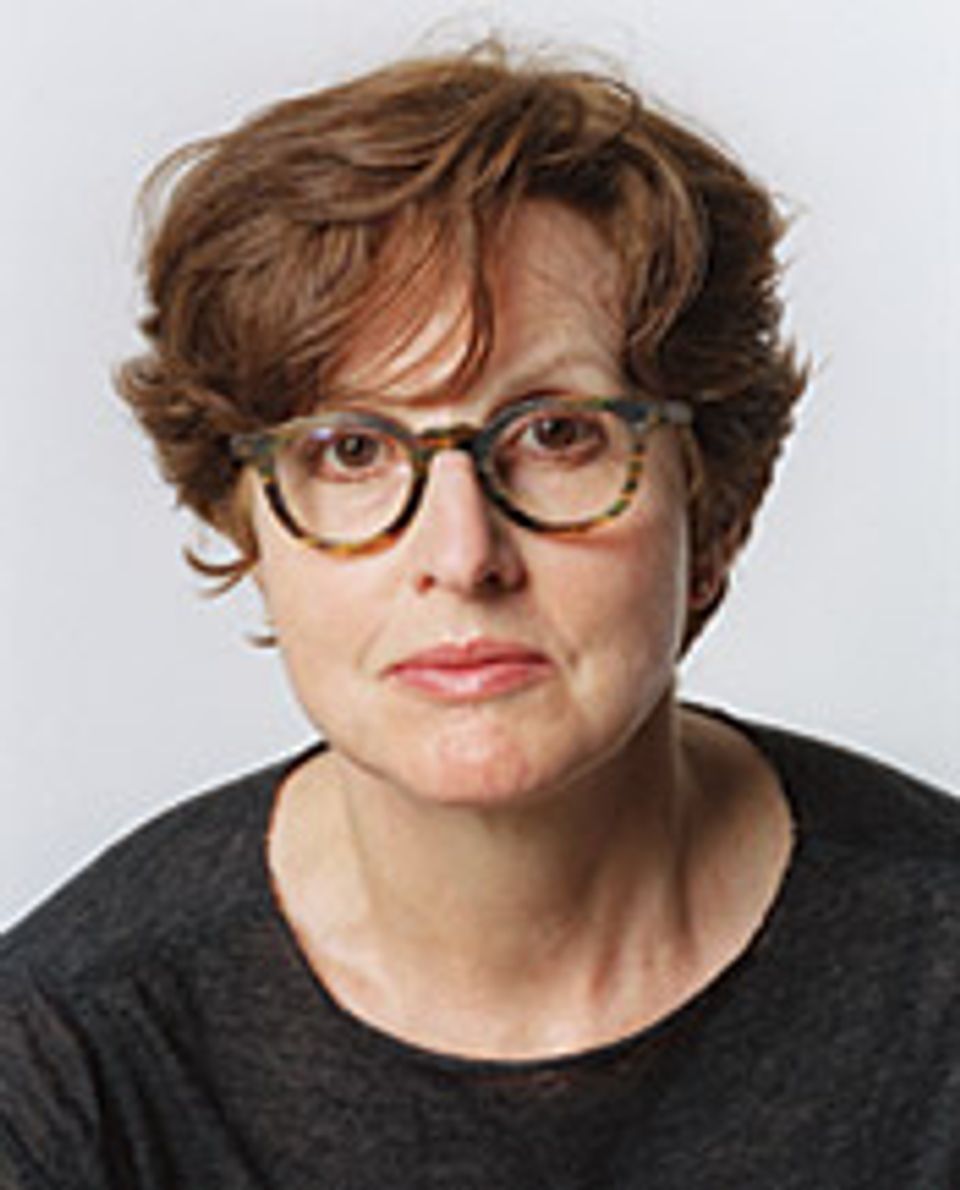
Roberta Smith, art critic for the New York Times
Second in a three-part series about fall lectures in Washington, D.C. The first lecture (Glenn Lowry) can be found here. Roberta Smith, art critic for the New York Times, spoke on October 5, 2005 as part of the Clarice Smith Distinguished Lectures in American Art series, sponsored by the Smithsonian American Art Museum.
First things first: You'll have to forgive me for filing this report so late. I lost the notebook in which I took notes on these lectures (and everything else). I'd called off the search party by the time I found it in a bout of pre–spring cleaning. So, caveat emptor—this is all somewhat dated.
Roberta Smith gave a free-form lecture—more a phone call between an enthusiastic art lover and her 500 similarly inclined friends than a canned lecture to a crowd. Smith let her points meander, just as anyone does to drive home or add color to points in a conversation. While I prefer this off-the-cuff approach to the strictly prepared lecture, it doesn't make for a great straight-ahead summary. Fortunately, Smith hewed closely to three themes: how her biography informs her criticism, what criticism does, and where criticism is going. And since, as it happens, the critic has pronounced opinions on these subjects (fancy that), I can give you a fairly close report about what she said by following these threads.
Biography and Criticism
(Important note! I'm not, in fact, writing even a short biography of Roberta Smith. I'm merely noting the things she said about her life and criticism.) For Roberta Smith, the criticism—meaning, in the general sense, looking at art—is not an elective part of life. As Smith poetically put it, "Art is an essential, nutritional, sustaining thing. It is like food; it is like sex." It became clear that the critic believes that the promotion of visual literacy is a societal obligation.
"Visual literacy" is a skill that Smith invoked repeatedly, though she never explained the idea in concrete terms. It's clear that she believes that art contributes to a necessary aesthetic health (a different approach than, say, the New Yorker's Peter Schjeldahl takes to art).
Perhaps Smith did not always have the same holistic view of art criticism. She spoke freely about the influence of Donald Judd, her early mentor, on her writing, and his "single-cell" view of criticism: "describe and judge." She also notes the late 70s work by Philip Guston as having challenged her preconceived notions about art.
Smith admits that the medium has influenced her message, or at least her feelings about her work. She said that she realized early in her career that the difference between writing for the major art glossies and for the Village Voice was like the difference between "doing nothing but recording versus doing nothing but playing on stage."
Function of Criticism
Smith said that she hopes to write art criticism without "succumbing to the hardening of the arteries," which reveals a genuine concern of critics: that the passion leaks out as the industry seeps in. She described criticism as occupying a sliver of territory between theory/history and market/advocacy. She made the point that the boundaries of this territory are largely claimed and defined by critics themselves, noting that as art criticism has become more often subsidized by the art critics, its function has become less well understood.
About her own criticism, Smith said that writing in more immediate publishing formats like the Village Voice emphasized the notion that artists "do not own the meaning of their own work." She also said that critics who do not write negatively as well as positively (and vice versa) do not write with transparency. Borrowing from philisophical literature, Smith noted that it is a critic's duty to "falsify" her writing—that is, to predict readers' objections and try to account for them—essentially, to self-edit, since cultural editors do not always have the specific breadth of knowledge to do so.
She also mentioned some fundamental skills of a critic (to go along with knowledge and writing chops, of course): complete confidence in one's opinion matched with tolerance for other opinions in the community. It helps when a writer believes that writing about art is part of the process of coming to understand it.
Future of Criticism
"The importance of terror" is how Smith prefaced her comments on the role of the Internet in art criticism. According to Smith, the verdict is still out as to whether the immediacy of online publishing in fact affects the art market, but the immediate Web review has more impact than the late print edition. But mark her up as a blog skeptic. She likened blogs to "phone conversations," as something "stuck in the ether." [There's some nuance to her observation—a blog entry doesn't have the permanent, archival presence that an article does. Nor are they usually edited. Ultimately, I think artists will answer this question by including (or not) hyperlinks in their resumes.]
The final point that I'll mention was her first point in the lecture: that there are approximately 30 slots for art critics in the American press. That's not very many. I couldn't square this data with Smith's reluctance to embrace the Internet as the best thing since sliced bread, but I think the key may lay in the fact that the New York Times currently employs more art critics than ever before (according to Smith, who's in a position to say). She hasn't given up on the traditional press.
One more note: The audience greeted her comments about the sorry state of visual literacy in the nation very enthusiastically. Also, I have to say, the hands selected during the Q&A session really dropped the ball: not one question about how the Grey Lady, the most visible publication in the nation's art media, is reacting to the changing media landscape. We'll find out over time, naturally, but I imagine that Smith's reservations would have been as revealing as her answer.


















